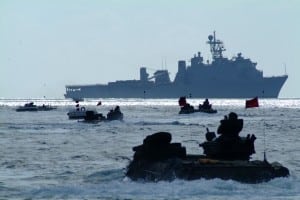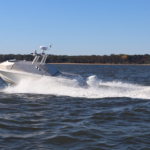
ANNAPOLIS, Md. – When Marines next storm a beach in wartime, they likely will be preceded by robots of all sorts, including autonomous or semi-autonomous high-speed amphibious vehicles, according to a senior Marine Corps official.Robotics and autonomy may even be the answer to the Marine Corps’ lengthy but fruitless search for an amphibious vehicle that can zip from ship to shore fast enough to evade enemy guided munitions, said Bill Williford, executive director of Marine Corps Systems Command.“In an amphibious…

 By
By 










